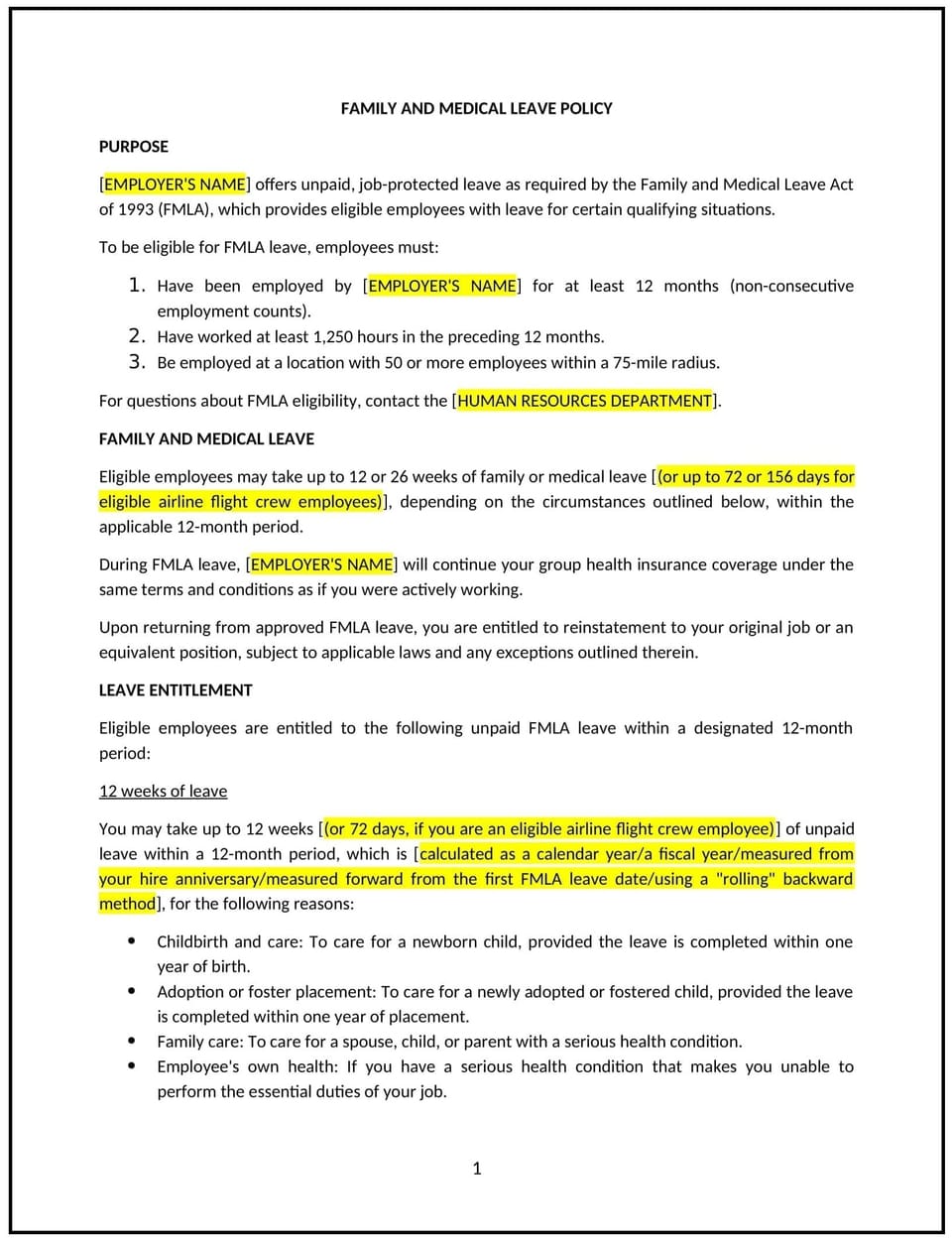Family and medical leave policy (Rhode Island): Free template

Family and medical leave policy (Rhode Island)
This family and medical leave policy is designed to help Rhode Island businesses support employees during significant life events, such as childbirth, illness, or caregiving. It outlines procedures for requesting leave, eligibility criteria, and job protection during leave.
By adopting this policy, businesses can promote work-life balance, comply with state and federal leave laws, and align with best practices for employee support.
How to use this family and medical leave policy (Rhode Island)
- Define leave types: Specify what qualifies for family and medical leave, such as childbirth, serious illness, or caregiving.
- Establish eligibility: Outline criteria for employees to qualify for leave, such as tenure or hours worked.
- Set request procedures: Provide steps for employees to request leave, including required documentation.
- Address job protection: Guarantee that employees will return to the same or an equivalent position after leave.
- Train managers: Educate supervisors on handling leave requests and maintaining workflow during employee absences.
- Review and update: Assess the policy annually to ensure it aligns with evolving business needs and legal standards.
Benefits of using this family and medical leave policy (Rhode Island)
This policy offers several advantages for Rhode Island businesses:
- Promotes work-life balance: Supports employees during significant life events, enhancing well-being.
- Ensures compliance: Aligns with Rhode Island’s Temporary Caregiver Insurance (TCI) and federal FMLA requirements.
- Enhances employee satisfaction: Demonstrates a commitment to supporting employees’ personal and family needs.
- Reduces turnover: Encourages employees to return to work after leave, improving retention.
- Aligns with best practices: Supports adherence to leave management standards.
Tips for using this family and medical leave policy (Rhode Island)
- Communicate the policy: Share the policy with employees and include it in the employee handbook.
- Provide training: Educate managers on handling leave requests and maintaining workflow during employee absences.
- Monitor compliance: Regularly review leave requests to ensure adherence to the policy.
- Address issues promptly: Take corrective action if leave requests are mishandled or denied improperly.
- Update regularly: Assess the policy annually to ensure it aligns with evolving business needs and legal standards.
Q: How does this policy benefit businesses?
A: By adopting this policy, businesses can promote work-life balance, ensure compliance, and enhance employee satisfaction.
Q: What types of leave are covered under this policy?
A: The policy applies to leave for childbirth, serious illness, caregiving, and other qualifying events.
Q: Who is eligible for family and medical leave?
A: Eligibility is typically based on tenure, hours worked, and the nature of the leave request.
Q: How should businesses handle conflicting business needs during leave?
A: Businesses should work with the employee to find a mutually agreeable solution or reschedule the leave if possible.
Q: How often should businesses review this policy?
A: Businesses should review the policy annually or as needed to ensure it aligns with evolving business needs and legal standards.
This article contains general legal information and does not contain legal advice. Cobrief is not a law firm or a substitute for an attorney or law firm. The law is complex and changes often. For legal advice, please ask a lawyer.


